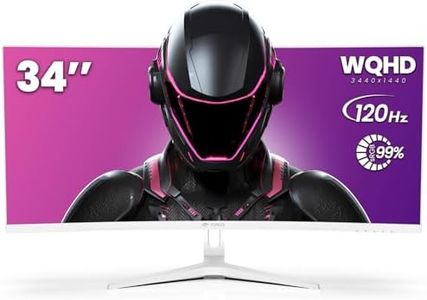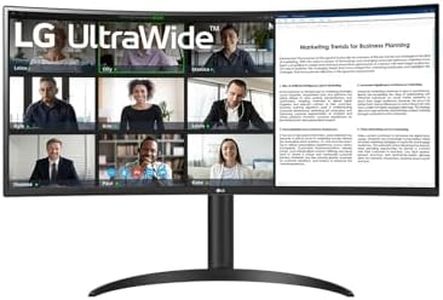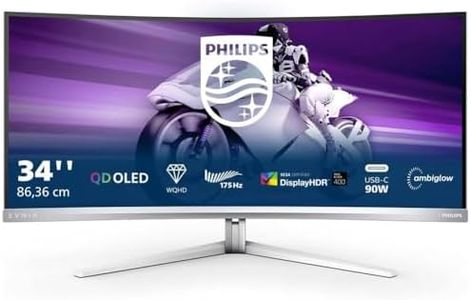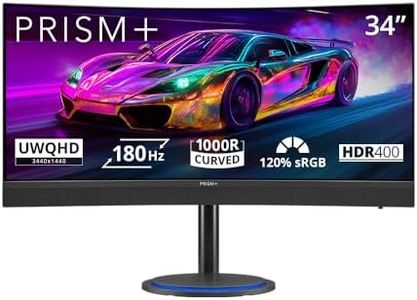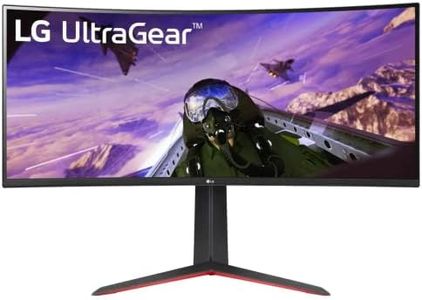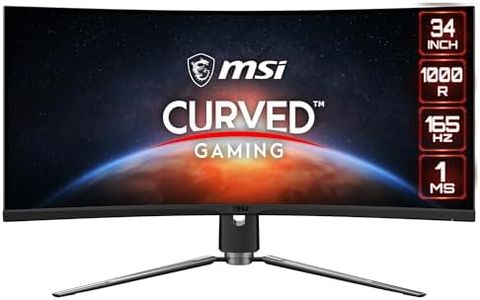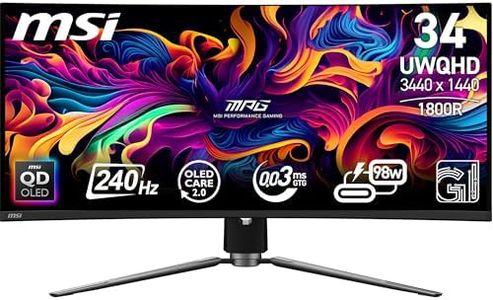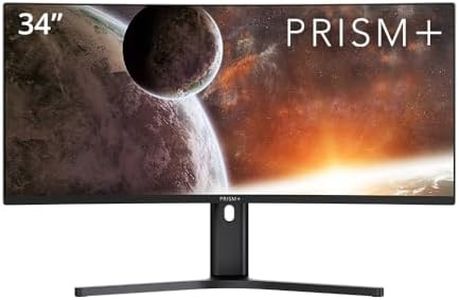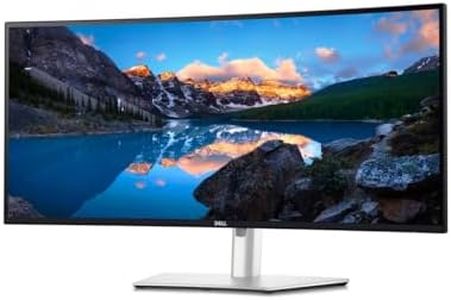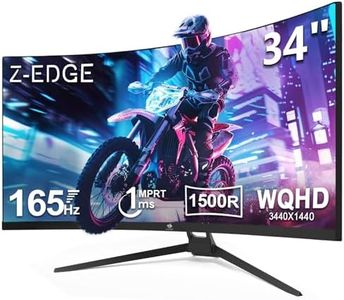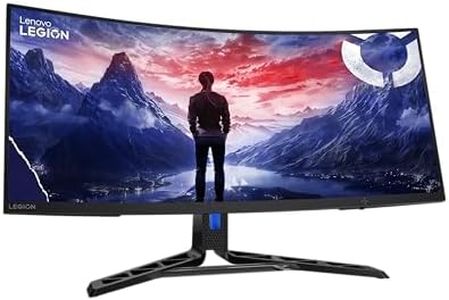We Use CookiesWe use cookies to enhance the security, performance,
functionality and for analytical and promotional activities. By continuing to browse this site you
are agreeing to our privacy policy
10 Best 34 Ultrawide Curved Monitor
From leading brands and best sellers available on the web.Buying Guide for the Best 34 Ultrawide Curved Monitor
Choosing a 34-inch ultrawide curved monitor can greatly improve your productivity or enhance your entertainment experience, but it's important to find a model that fits your needs and preferences. Before picking a monitor, think about how you'll primarily use it—whether for work, gaming, creative tasks, or general use. Take your workspace size and viewing distance into account as well, since these can impact your comfort and the effectiveness of a curved, wide screen.ResolutionResolution refers to the number of pixels the screen can display horizontally and vertically, such as 3440x1440. Higher resolution means clearer and sharper images, which is important for multitasking and detail-oriented work. In 34-inch ultrawide monitors, common choices are 2560x1080 (Full HD) and 3440x1440 (Quad HD). For general use and gaming, 2560x1080 might suffice, especially if you value larger icons and text. However, for creative work, multitasking, or if you want crisper images and more screen space, 3440x1440 is often the better pick. Your primary use should guide your choice: for finer details and more workspace, aim higher.
Curve Radius (Curvature)The curve radius, often expressed as a number like 1500R or 1800R, indicates how curved the monitor is. A smaller number means a more pronounced curve. Curvature is important because it affects how natural and immersive the viewing experience feels. If you usually sit close to the screen and want to be surrounded by the image (as with gaming or entertainment), a tighter curve (like 1500R or 1800R) is beneficial. For general productivity or if you sit further away, a gentler curve (like 3000R or 3800R) might be more comfortable. Think about how close you’ll sit and whether immersion or flatness matters more to you.
Refresh RateRefresh rate measures how many times per second the screen updates its image, shown in hertz (Hz). A higher refresh rate (like 100Hz or 144Hz) provides smoother motion, which is particularly valuable for fast-paced gaming or video editing. For casual users or office tasks, 60Hz is often sufficient, while gamers should look for at least 100Hz to reduce motion blur and enhance responsiveness. Decide based on whether smooth movement and action are important for your tasks or games.
Panel TypePanel type refers to the technology used in the display, with common options being IPS, VA, and to a lesser degree, TN. IPS panels offer better color accuracy and wider viewing angles, making them ideal for creative professionals or anyone who values vibrant colors. VA panels often have higher contrast ratios and deeper blacks, which is nice for movie watching and gaming in dark environments. Your ideal choice should reflect what you do most—if colors and angles matter, opt for IPS; if you love deep contrast, consider VA.
ConnectivityConnectivity covers the ports available on the monitor, like HDMI, DisplayPort, USB-C, and extra USB hubs. The right options let you connect your computer, gaming console, or even charge devices. Consider what devices you'll connect now and possibly in the future. If you use a modern laptop with USB-C, look for a monitor that can handle video and power through that port. Make sure it syncs well with your setup for convenience and flexibility.
Ergonomics and Stand AdjustabilityErgonomics involves how much you can change the position of the monitor—height, tilt, and sometimes swivel or pivot. Good ergonomics help you reduce neck and eye strain for long periods of use. If you’ll be spending hours in front of the screen, or if multiple people will use the monitor, look for those with adjustable stands or VESA mounting compatibility. Your comfort and posture needs should guide this choice.




